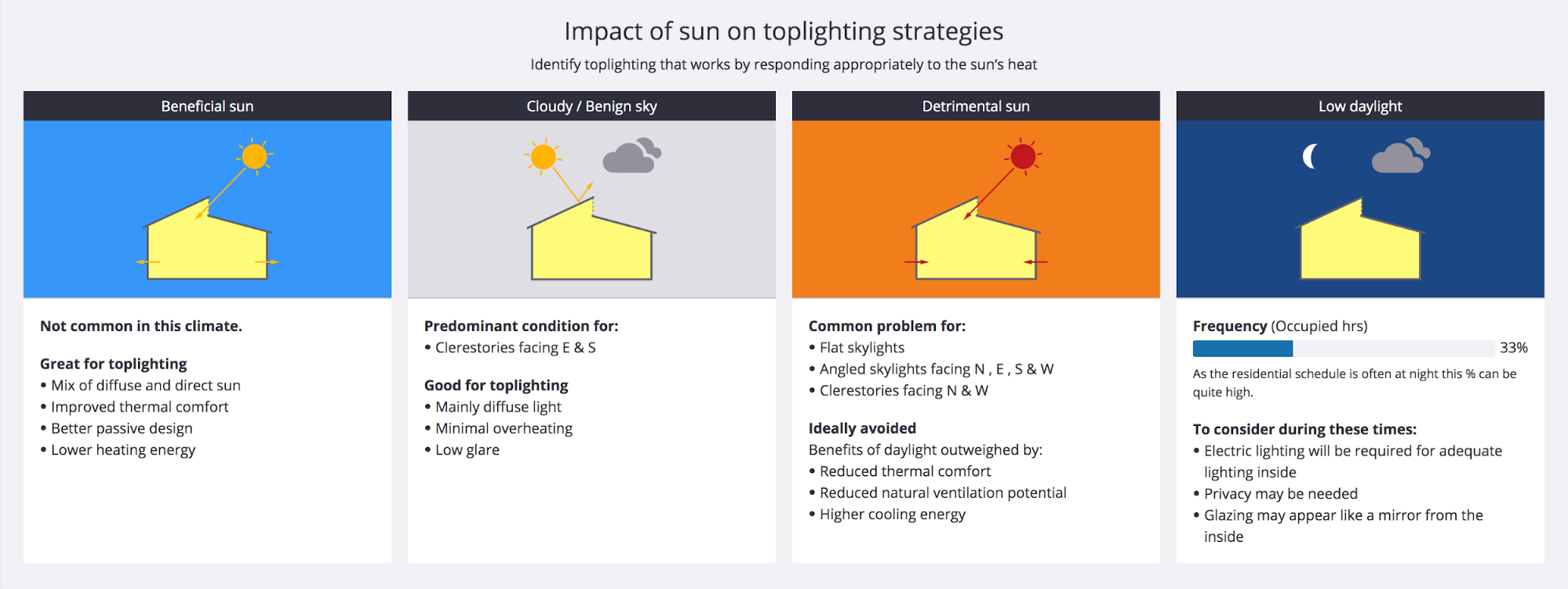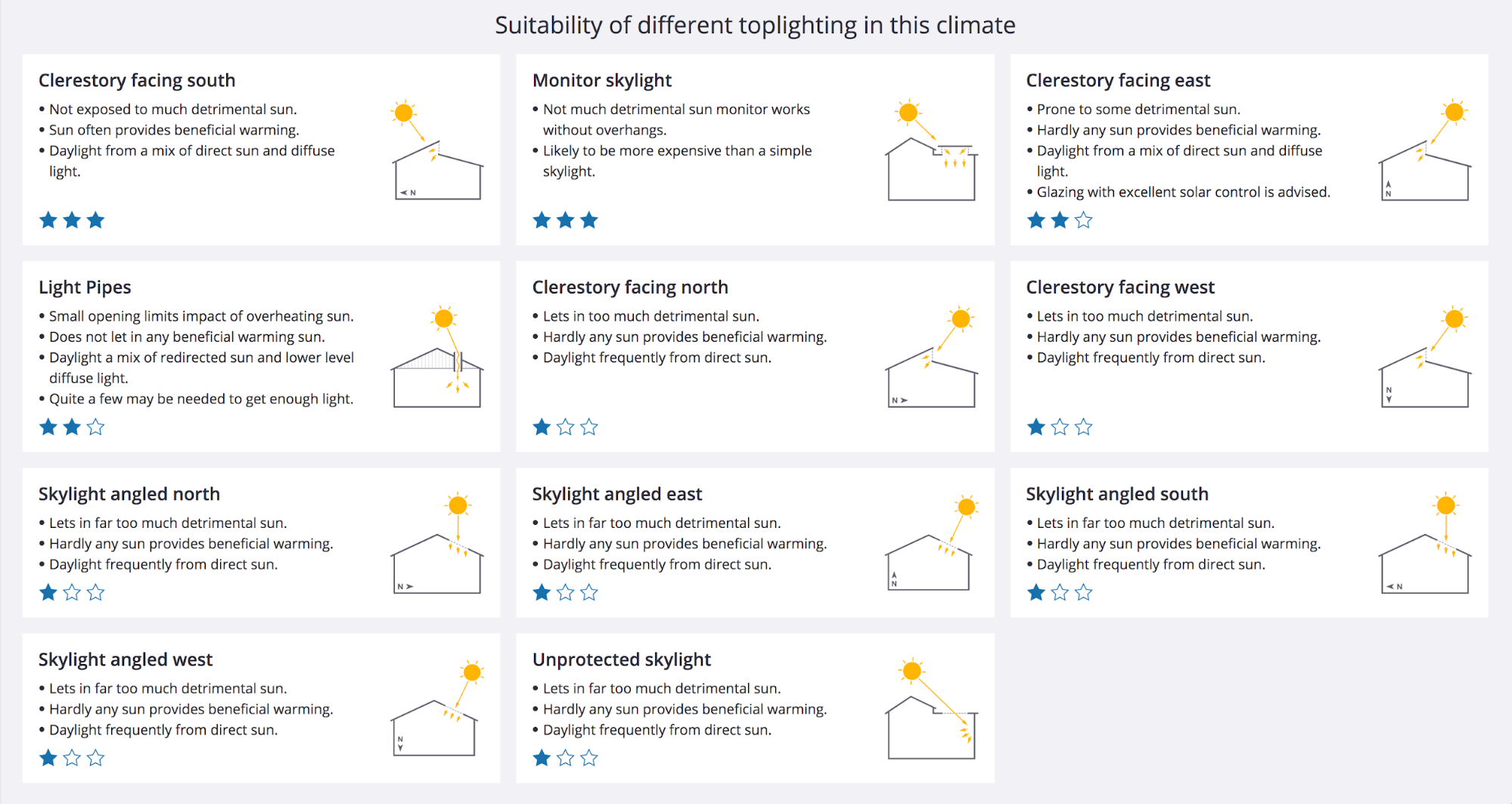Which solutions have the best overall potential for bringing daylight into this building?
Use this page to:
- Get a better feel for sky conditions that affect the choice of toplighting solution
- Get guidance on which toplighting design strategies are most likely to work well in this climate

How the climate affects toplighting
The top section of this page looks at 4 key conditions that occur for your study location in the historical climate data, during occupied hours.

The recommendations in this feature are based on the idea that toplighting should ideally be designed to let light in and also heat when it is needed, but not when it is not needed. This is important - we want to help designers avoid adding daylight that increases cooling energy or worse, leads to the house requiring some sort of active cooling.
For this feature, for residential projects, we break the climate up into 4 broad conditions. These are based on the kind of sun experienced by different facades:
- Beneficial sun. This describes times when two things are happening at once:
- The sun is coming into the building
- The sun coming into the building provides heat at a time when it is helpful.
- Benign / cloudy sky. This describes times when one of the following is happening:
- The sun is behind a cloud, so there is only diffuse daylight
- The sun is not shining on the surface containing glazed toplighting.
- Detrimental sun. This describes times when two things are happening at once:
- The sun is coming into the building
- The sun coming into the building provides heat at a time when it is unhelpful.
- Low daylight. Times where it’s too dark outside to expect to be able to get daylight through a window or skylight.
Part of what helps us decide the best strategies for top-lighting, is how often a specific surface experiences the conditions above.
- Surfaces that mainly receive beneficial sun (and/or see benign skies), for example, make great areas to locate toplighting glazing.
- Surfaces that mainly receive detrimental sun are less suited to toplighting.
There are ways to mitigate these effects - this information is provided to help guide design thinking.
Which strategies are most suitable
This section is intended to steer you in the right direction for toplighting strategies. The goal here is more to provoke design inspiration than to be a prescriptive solution.

Each card represents a different approach to shading the facade. On the card we offer a Star rating as follows:
- Three stars = Solutions with the best potential
- Two stars = Solutions with some potential but also issues to address
- One star = Possible solutions that probably have a lot of issues to address
- Zero stars = Solutions probably best avoided
The following issues are examples of things that may need to be considered with lower scoring initiatives
- It could lead to the space needing air-conditioning if it did not already have it
- It could cause cooling energy to significantly increase if the home had air-conditioning
- It could cause the space to be uncomfortably hot more often than may be acceptable
For example, in some cases, solutions with one star could potentially be mitigated through the use of shading or high-performing glazing.